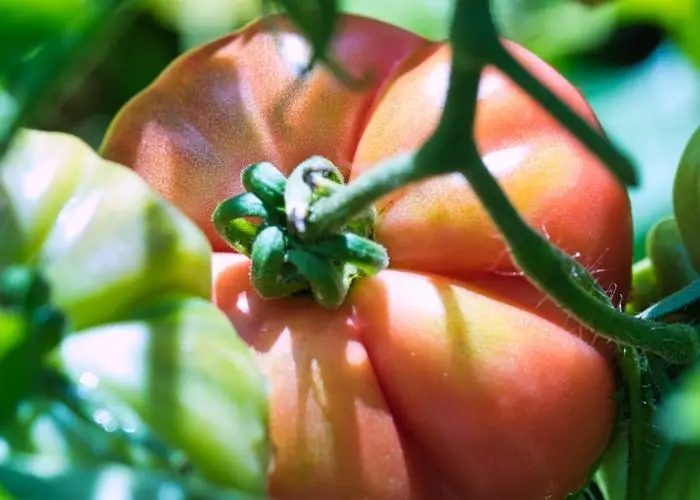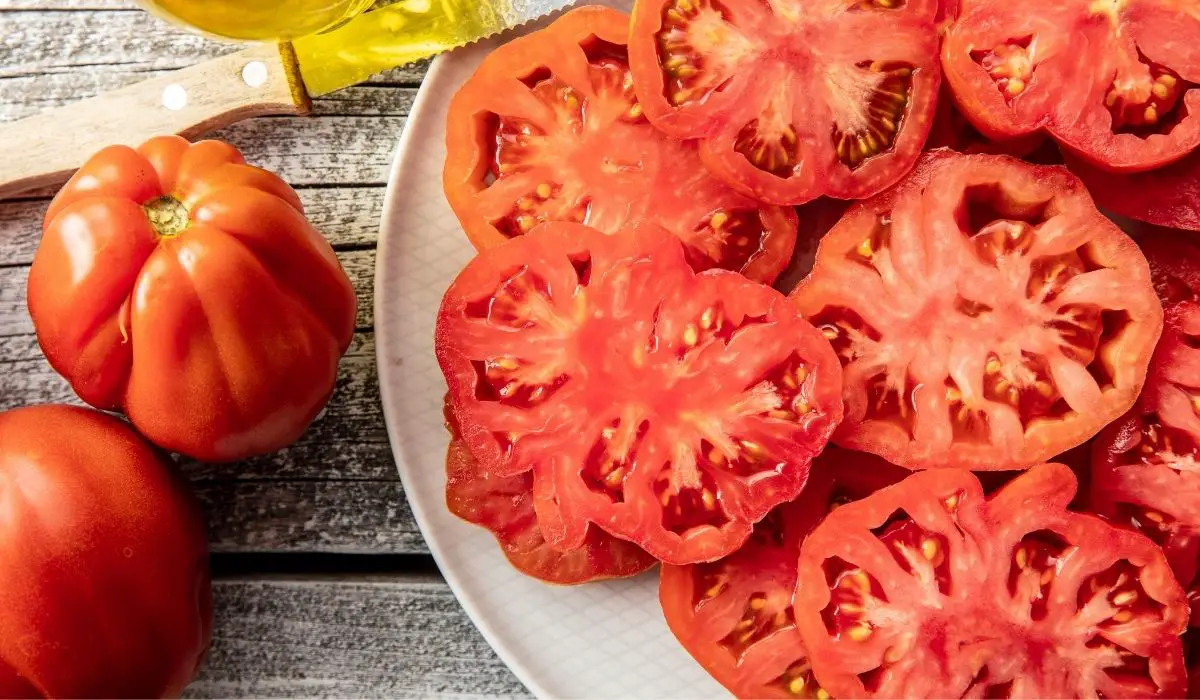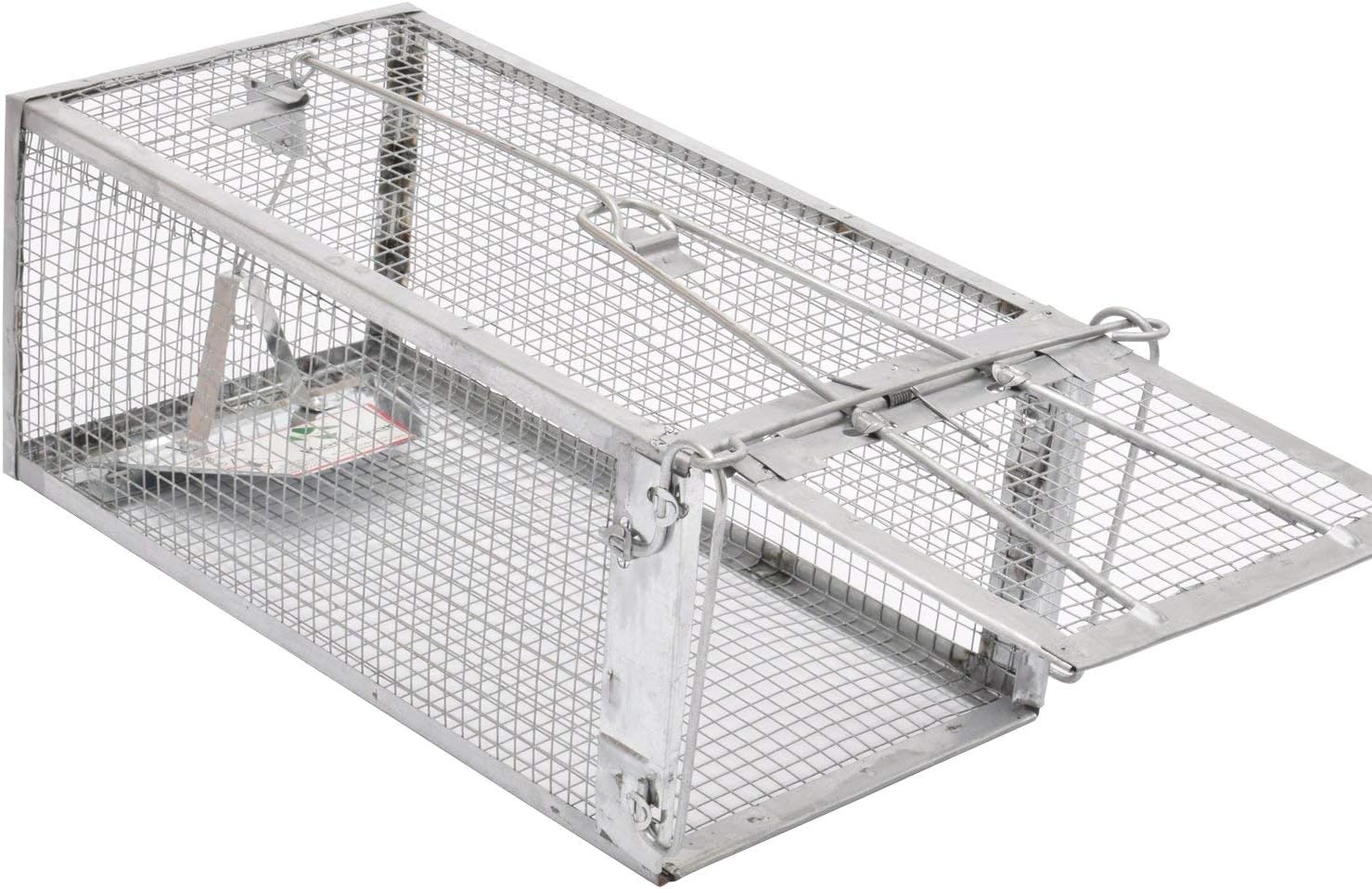Last Updated on July 26, 2022 by Griselda M.
The beefsteak tomato is an old heirloom tomato that delivers great crops. In this article, we will blend a whole lot of experience and wisdom to show you how to grow these tomatoes easily, productively, and produce the best-tasting fruit.
What Is A Beefsteak Tomato?
Beefsteak tomatoes are a family of large tomatoes that have been bred over the years. They are true breeding heirloom tomatoes – this means that if you keep seed from one year and plant it the next, the tomatoes you get will look approximately the same as the previous years.
When we start trying to classify tomatoes the first big division is determinate and indeterminate tomatoes. Determinate tomatoes grow to a specific size and then flower, fruit, and normally die. These are great for commercial farming as it makes things simple. Indeterminate tomatoes produce vines that just keep growing through the season, and flower and produce fruit as they go. In other words, if you can keep your plant alive the whole season, you will get a huge crop.
Beefsteak tomatoes are normally indeterminate tomatoes. They will take over your garden if given the resources and will give you buckets and buckets of huge fruit. I have experienced this a few times and it can actually be quite traumatic. The tomatoes taste so good when you are picking them that you can overconsume and turn your stomach inside out. Be warned.
Over the years sub-varieties of beefsteak tomato have been developed. I grow three of these. The Crimean black, Rainbow, and Brandywine beefsteak varieties. I find these have a better taste than the straight red varieties. For a good red tomato try Roma, Moneymaker, or Little Wonder.
I grow my own tomatoes for flavor and safety. Commercial tomatoes are sprayed with a LOT of chemicals. Even the “organic” ones get sprayed with a lot of weird and wonderful concoctions. When we grow our own tomatoes we can control exactly what goes into them – and the result is that they just taste better.
I am going to share with you my method, which is based on stuff I have read, stuff my Mom and Dad taught me, stuff I learned from my Uncle Harding in Canada, Dr. Mabasa (who writes for this blog), and my friend Alaric, and from lots of other growers.
Starting Your Beefsteak Seedlings
I like to start my big tomatoes (beefsteak are big) quite early so I use an indoor germination system.
I use peat pots – the square ones work better than the round ones. I normally start the seeds off in some cloning chambers I have left over from some research we did on cannabis a few years back. The starter boxes I have to look like this. I see that there are now ones that come with lights that I would probably buy if I did it again.
Fill the pots with decent potting soil such as this and then plant your seeds as per the instructions on the bag. Normally I plant three seeds per pot. You can use a small pair of scissors to clip the two worst ones out if all three come up.
Make Sure You Have a Good Soil For Growing Beefsteak Tomatoes
Tomatoes are incredibly heavy feeders. I build my own soils using weathered manure, and then I put leaves and grass in my chicken coop and the chickens dig this over and mix it with their poop. I mix that with pearlite and sometimes lava dust. I also put spent coffee grounds in the mix when I have some. This is a good source of nitrogen.
In the past, I managed to buy about 300lb of spent field mushroom compost from a mushroom farm – if you can get this stuff it is incredible for growing tomatoes.
My suggestion is to buy soil the first few times you grow tomatoes but while you do this learn to mix your own. There is something lovely about building your own soil.
Earthworms:
Tomatoes love having a lot of earthworms in the soil around their roots. I have multiplied my garden earthworm population to the point where it is nearly silly. If you cannot find earthworms somewhere, then buy some. The more you have in your soil the better your plants will grow.
Soil fungi:
I was introduced to Trichoderma by Dr. Mabasa who also writes for this blog. This fungus is incredible in terms of its ability to make the soil more fertile. In her research, she actually showed that it makes plants more salt tolerant and has several other benefits. Since learning about using this fungus I have established it in my garden and it is now everywhere. The plants have never been better.
Mycorrhizae:
These are fungi that actually live in the soil AND the root of your tomato plant. Research has shown that these beneficial fungi can increase your yields by 30-40% depending on what paper you read. I mainly find that they improve the taste of the fruit!
For me, my reason for growing my own vegetables is that I want to know that the things I eat do not have pesticides on them, are produced in healthy soil, and have a high concentration of minerals in them.
A Soil Builder For The Best Results When Growing Beefsteak Tomatoes
As your tomatoes grow they remove nutrients from the soil. It is important to keep replacing these. This is why I emphasized earthworms earlier. Earthworms will move nutrients around your soil quickly. If you place an organic soil builder (I like to call organic fertilizers soil builders because they do build the soil) on the surface, the earthworms will pull this down into the soil quickly as it gets wet. You can also place cow manure, or sheep manure that has been weathered a bit on the surface and the same happens.
I would also suggest that you can follow my advice here and get coffee grounds from restaurants and coffee shops. These are good fertilizers for tomatoes. The best part is its free fertilizer too.
Get Sunlight For The Beefsteak Tomatoes
When I was a kid my Dad was a research scientist on a big inland lake in a desert. Tomatoes thrived on the banks of the lake and actually became an invasive pest. These tomatoes grew in sunlight that was so intense that Volkswagen Motor Corporation had a farm nearby where they planted car components to see how fast the sun would damage them. This is some of the most intense sunlight in the world. The take-home message is that tomatoes can tolerate very intense sunlight and heat if they have abundant water.
My garden is quite shaded so I have to find the sunniest spots for my tomatoes. If tomatoes do not get a lot of sunlight they become magnets for every disease you can imagine. Red spider mite, whitefly, aphids, blight, viruses, and fungi. A tomato that has good soil, sunlight, and air movement will have a lot less of the above problems.
Learn more about What Is The Best Grow Bag Size For Tomatoes?

Water Your Plants Regularly When Growing The Beefsteak Tomatoes
If you’re growing beefsteak tomatoes, water your plants regularly when growing beefsteak tomatoes. The soil surrounding the plant must be well-drained.
If you followed my soil advice above, you should be fine. The inclusion of pearlite in the soil helps avoid it getting waterlogged and also keeps it aerated. Earthworms help here too. If you overwater a badly drained soil you will drown the roots of your tomatoes and they become disease prone. If you overwater a well-drained soil you will wash all of the nutrients out of the soil and your tomatoes will show nutrient deficiency symptoms. The trick is to keep the soil moist. Not wet.
Remove Pests To Avoid Damage To Your Beefsteak Tomatoes
Tomatoes are pest magnets. Here are a few tricks I have learned over the years:
Whitefly
This irritating little fly will infest your plants. It damages the undersides of leaves and makes the tomatoes susceptible to fungal attack. I used to have terrible problems with these and discovered the following tricks.
Metarhizium anisopliae – this is a fungus that kills whitefly. I have had great success with it.
Beauveria bassiana – this is also a delightful fungus that eats whitefly and turns them into little balls of fluff. Here is a formulation.
I have also over the years introduced little parasitoid wasps that appear to have become residents permanently in my garden. Speak to your local agricultural extension officer and find out which wasps are useful in your area. These tend to be controlled.
Red Spider Mite
In the middle of summer, every red spider mite in the neighborhood will march into your tomatoes and kill them. This is very discouraging! Warm dry summer days bring these pests out and they weave their little webs of destruction under your leaves. The leaves take on a characteristic deformed look and get yellow spots on the surface.
I have found in my area using Persimilis predatory mites has nearly eliminated these red spider mite outbreaks. The Persimilis mites run around eating the red spider mites – you can end up with a sea saw population – the spider mites grow like crazy, the Persimilis mites expand in numbers and eat them, then the Persimilis population crashes and the Red spider mites come back. It will however never get completely out of hand.
Speak to your local agricultural extension officer and find out who in your area provides the best predatory mites with the highest living mite count. You do not want to buy jars of dead mites.
Protecting Your Crop against Rodents and Birds
You may need bird netting to protect your tomatoes. Ripe tomatoes get pecked by birds and then they attract fruit flies and it all just becomes a big mess.
You will find that ripe tomatoes attract rodents. You need to have a few of these traps around your plants. Bait the traps with apple cores on the hooks. When you catch a rat, kill it or give it to somebody that keeps snakes. Do not go and release it somewhere else – it just becomes somebody else’s problem then. Rats are an invasive pest, and they cause incredible damage to the environment. Nobody will judge you for killing a rat and if they do, they have rocks in their heads.
Harvest After Growing Beefsteak Tomatoes And Enjoy Them
Take a basket with you. I always place an old towel in the bottom of my basket. This stops bruising. There is no point in not vine ripening homegrown tomatoes, so the idea is to leave them on the vine as long as possible – we are trying to produce tomatoes that do not taste like shop tomatoes…
A ripe, or over-ripe tomato has the best taste and the lowest acid content. This is why I pick them when they are like this.
You will find that you get a lot of tomatoes. The initial wonder means these end up in salads, on burgers, and everywhere. After a while, you start to either get sick of tomatoes or sick from them (too many tomatoes cause a runny stomach). This is the point where I cut them up, boil them in a pot for a few hours to reduce the moisture, run them through my blender and then freeze them in muffin trays. You can take the frozen blocks of tomato and put them in a big bag in your freezer and use them for the whole year when you make soups and pretty much any place you would have used tomato paste or puree.
Conclusion On Growing Beefsteak Tomatoes
I hope that you have enjoyed this article. As you can see, compared to a lot of Search Engine Optimized cut and past “how-to guides” out there, this article is actually based on my experience, knowledge, and wisdom gained from making a lot of mistakes. Please enjoy this knowledge, use it and go out and make your own mistakes and learn from those.
For more related articles about plants and nature, check our other articles about different topics.
FAQ
What is the best way to grow beefsteak tomatoes?
This one might seem like a strange question to you, but we’re going to try to answer it anyway. So, what's the best way to grow beefsteak tomatoes? It depends on a number of factors, including soil type, fertilizer level, temperature, and more. The important thing is that the soil should be well-amended with composted manure. Also, you should be sure that the plants are given plenty of water. As far as fertilization goes, some farmers recommend applying between 6-8 ounces of fertilizer per 100 square feet of soil every week. This amount will be enough to give the plant a boost.
How long does it take for a beefsteak tomato to grow?
The average length of time a beefsteak tomato takes to grow from a seed into a fruit of approximately 6-7 inches in length is about 5-6 weeks. The tomato plant grows in three distinct stages. First, the seed sprouts and forms what we call a seedling. The plant then enters the second stage, when the seedling produces its first leaf, which is called a “crown”. Finally, it enters the third stage, where it develops leaves and flowers. This happens after about 3-4 weeks of growth.
Are beefsteak tomatoes hard to grow?
They’re not. In fact, they’re probably the easiest of all vegetables to grow at home. Most are annuals that are only available in spring and fall. They need a long season of warm days, cool nights, and plenty of water to produce. To get started growing beefsteaks tomatoes, start indoors about six weeks before last frost date. Plant seeds three inches deep, and thin to one seedling per foot when seedlings emerge. Space your plants 12 to 16 inches apart.
What type of fertilizer when growing beefsteak tomatoes?
There are many different types of fertilizers. This is important because it's easy to get confused and use the wrong one or mix the wrong ones. Here are some things to consider when choosing a fertilizer for your plants: The nutrient value. The purpose of fertilizer is to provide the plant with what it needs to grow and reproduce. You want to choose a fertilizer that has a high nutrient value. The amount of nitrogen and phosphorus in the fertilizer is also important. Phosphorus and nitrogen are the two major macronutrients in plants.
Read more about Tomato Plants Not Growing – What Could Be The Problem? 5 Problems Related To Tomato Growth
Branko is the world‘s most enthusiastic gardener! He is always on the hunt for the perfect flower, bush or tree to add to his ever–growing garden. He is known for his love of all things green, and his passion for nurturing the plants he grows is unmatched. He loves to get his hands dirty and can often be found humbly tending to his garden at all hours of the day. Branko is the go–to guy when it comes to gardening advice – he is always happy to share his knowledge and wisdom with anyone who will listen. He also loves to play pranks on unsuspecting visitors, so beware if you enter his garden!







